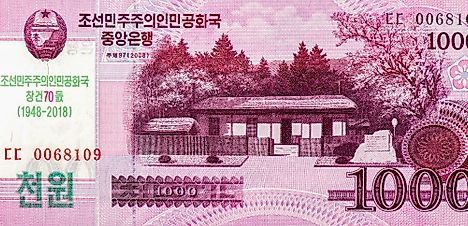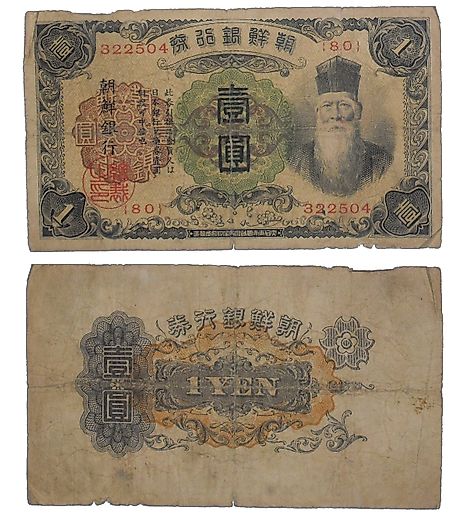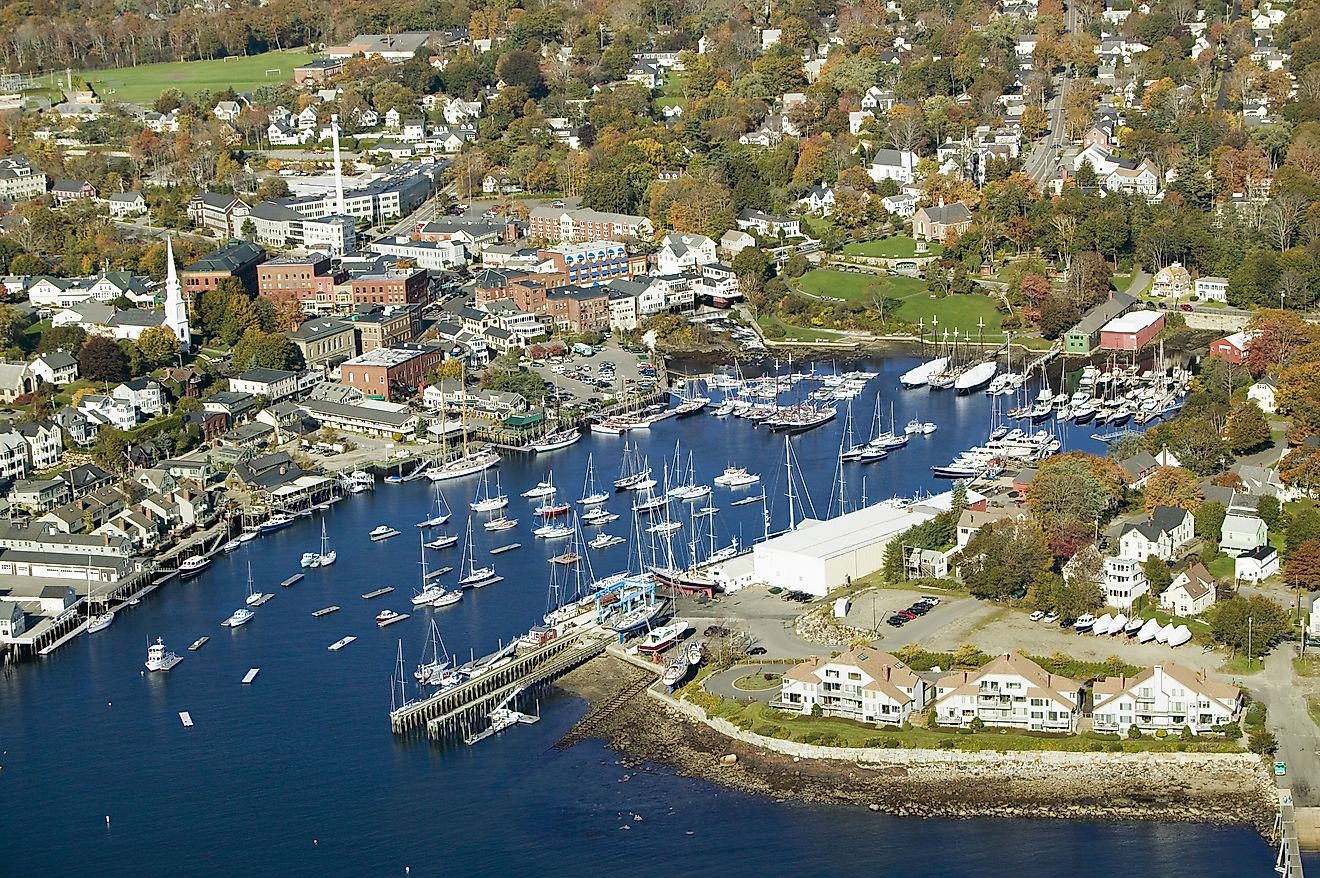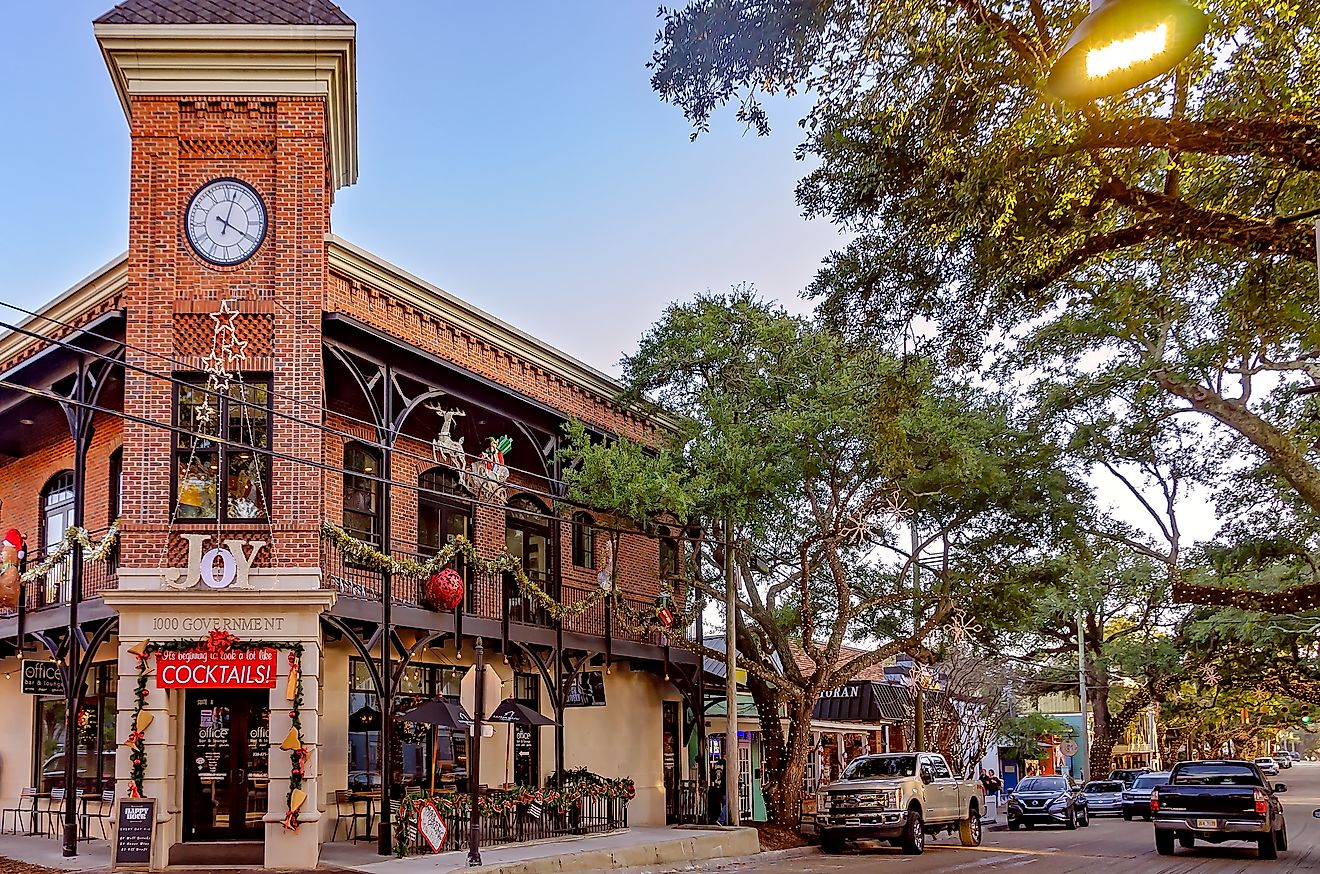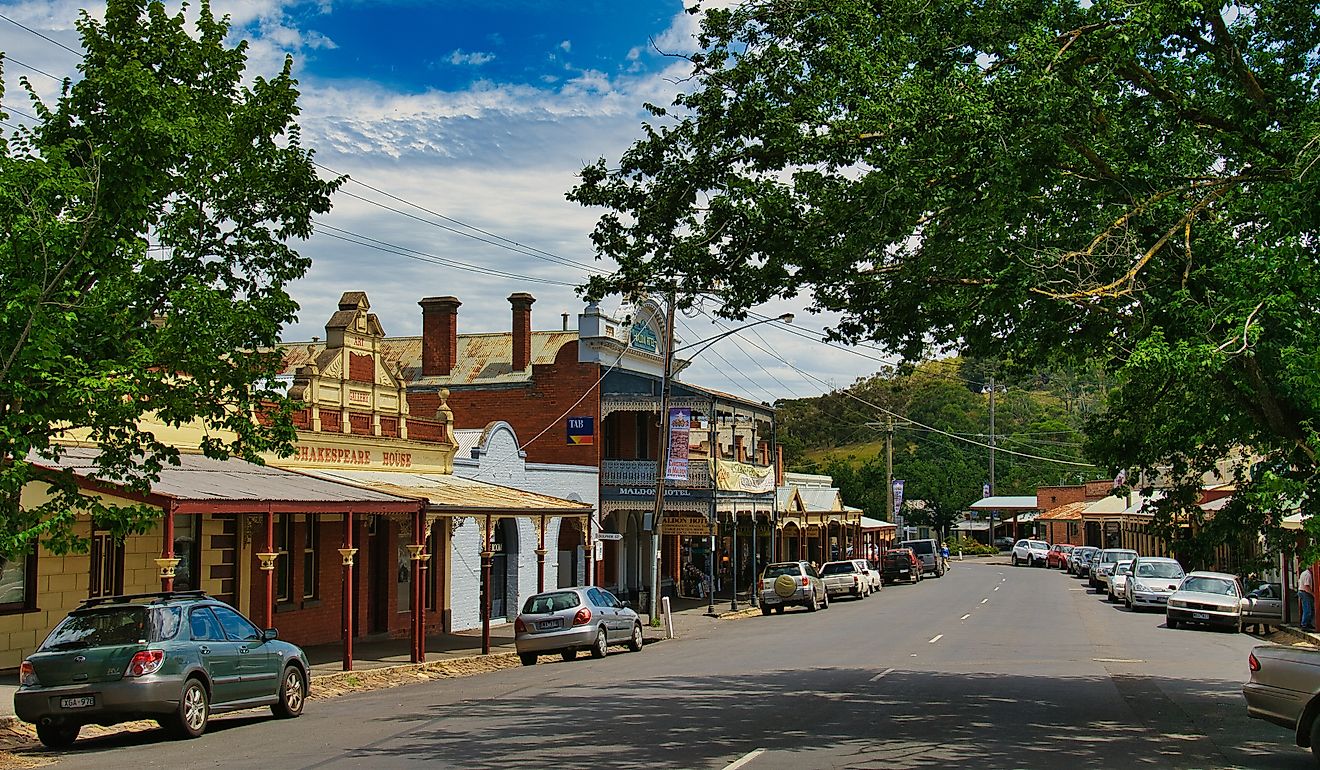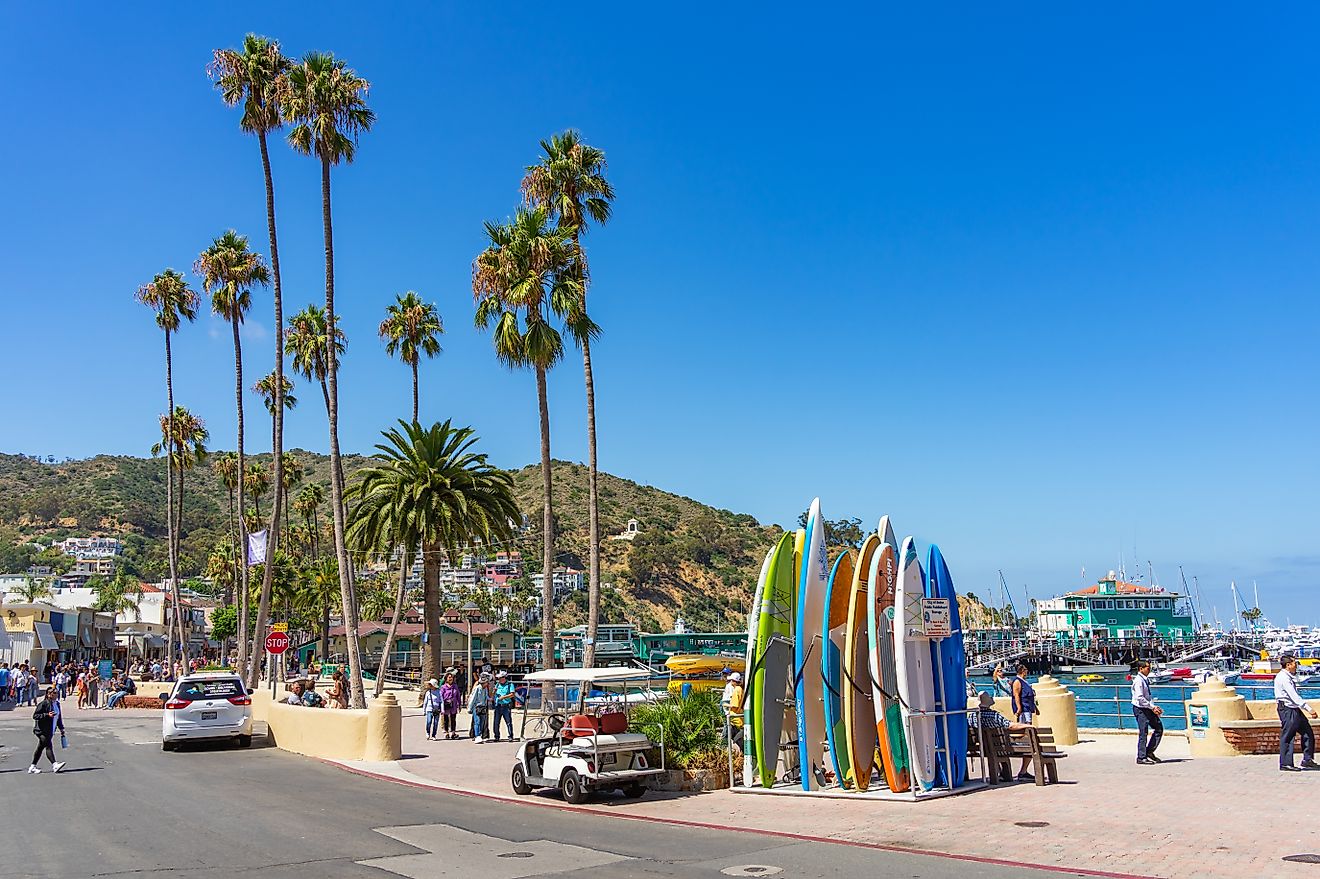Flags, Symbols, & Currencies of North Korea
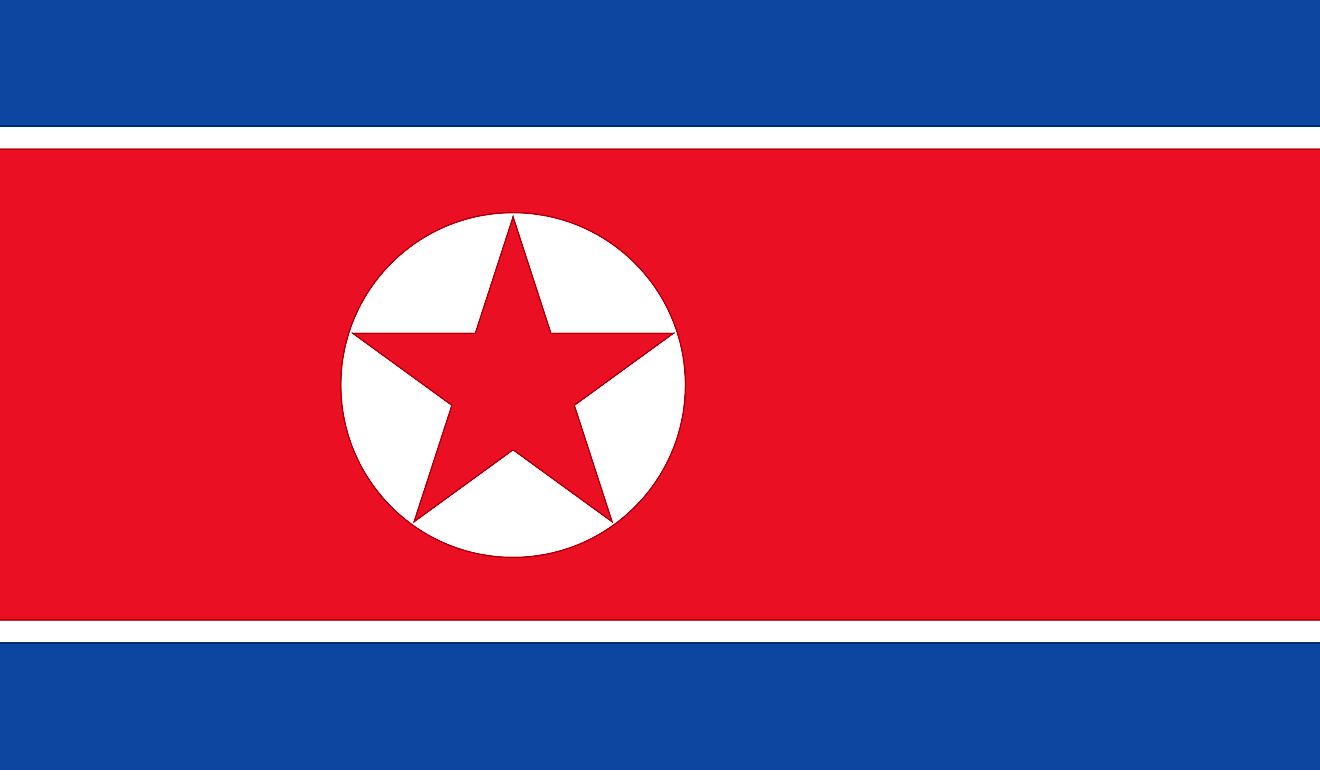
The flag of North Korea was officially adopted on September 9, 1948. It features three horizontal bands of blue (top), red (triple the width of blue bands), and blue (bottom). Narrow white bands border the red-colored central band both above and below, separating the red from blue above and below it. The central red band has white disk with five-pointed star. The disc with the star is closer to the hoist side of the flag. The national flag of North Korea has a height to length proportion of 1:2.
The flag of North Korea is clearly described by Article 170 of the country's constitution. The red star on the flag symbolizes communism and socialism. However, since the philosophy of Juche has largely replaced communism in the country, the red star is now believed to represent the country’s revolutionary attitude. The red stripe in the middle represents the people’s courage, determination, and love for their country. While the blue color symbolizes unity. The white represents the unified Korean race.
The History of the Flag
The Korean Peninsula was under the rule of the Korean Empire from the late 19th to the early 20th century. During the monarchial rule in the region, the flag used was known as the Taegukgi. It featured four trigrams surrounding a yin-yang symbol. This flag was used in Korea until the Japanese came to power in 1910. Following the split of Korea into two zones, the newly formed Democratic People's Republic of Korea or North Korea re-adopted the Taegukgi. However, there was a lot of debate in the country regarding the use of the Taegukgi as the new flag since its design was based on concepts of Chinese philosophy which became unacceptable to the Soviets. After great debate and controversy, a new flag was designed and adopted on July 10, 1948. It began to be officially used from September 8, 1948.
Symbols of North Korea
National Coat of Arms of North Korea
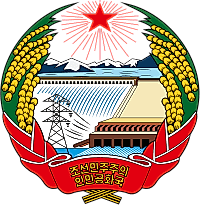
The current version of North Korea's coat of arms was adopted in 1993. However, it is based on the national symbol used since the foundation of North Korea in 1948. The national emblem consists of several features including the Sup'ung Dam under Baekdu Mountain and a powerline. The crest features the famous five-pointed star emitting red rays. Ears of rice make up the border. The red ribbon below the emblem reads: "The Democratic People's Republic of Korea" in Hangul characters. The dam symbolizes the abundant eectricity generated in North Korea
National Anthem
- Anthem Title: Aegukka (The Patriotic Song)
- Music composer: Kim Won-gyun
- Lyricist: Pak Se-yong
- Date of Adoption: 1947
Aegukka (Patriotism Song) is the national of North Korea, composed by Kim Won-gyun in 1945 and adopted as the official anthem in 1947. The song's lyrics were written by Pak Se-yong and the song was mainly sung during the celebrations to mark the country's independence from the Japanese.
Besides Aegukka, the anthem is also known by several other names, including Ach'imŭn pinnara (Let Morning Shine). In North Korea, the term Aegukka is often defined as a song for waking up the mind to love the country. While other patriotic songs praise the the Kim Dynasty or Worker's Party, the anthem praises the entire country. Interestingly, the national anthem is only performed outside the country during international events and not inside the country. Thus, most North Koreans do not know the anthem's lyrics.
Aegukka
아침은 빛나라 이 강산
은금에 자원도 가득한
삼천리 아름다운 내 조국
반만년 오랜 력사에
찬란한 문화로 자라난
슬기론 인민의 이 영광
몸과 맘 다 바쳐 이 조선
길이 받드세
백두산 기상을 다 안고
근로의 정신은 깃들어
진리로 뭉쳐진 억센 뜻
온 세계 앞서 나가리
솟는 힘 노도도 내밀어
인민의 뜻으로 선 나라
한없이 부강하는 이 조선
길이 빛내세
The Patriotic Song
Shine bright, thou dawn, on this land so fair;
Thy land in silver and gold aboundeth.
The country of three thousand ri;
Thy history five millennia stretcheth.
Rich in cultural heritage,
Our Folk were ever renown'd and sage
And as with heart and soul we strive –
Korea shall forever thrive!
The spirit of Paektu we embrace,
’Tis where our love of toil dwelleth,
United with truth, our strong will shall face
The whole world and set forth.
O nation, thy will our People built
Braceth fierce waves mightily
Our united Korea the Great
Fourisheth eternally!
The Currency of North Korea is the Korean People's won
The official currency of North Korea is known as the won or the Korean People's won. It is subdivided into 100 chon. The Central Bank of the Democratic People's Republic of Korea, headquartered in the capital of Pyongyang, is responsible for issuing the currency. The currency code for the won is KPW while the currency symbol is ₩. It was adopted as North Korea's official currency in December 1947. The term won is a cognate of the Japanese yen and the Chinese Yuan, with all three names being originally derived from a Chinese word meaning round shape.
Banknotes and Coins
The first worn coins were issued in 1950 in the denominations of 1, 5 and 10 chon. 1 won coins were introduced in 1987. A new set of won coins were introduced in 2005 in the denominations of 100, 50, 10, and 5 wons. Today, these coins carry very litle value and are rarely used. Banknotes are issued in the denominations of ₩100, ₩200, ₩500, ₩1000, ₩2000, ₩5000 and bear different features including popular personalitiesand landmarks.
Current Use of the Won
As of 2012, those visiting North Korea and some privileged locals could pay for goods that are priced in "tied" won using a local debit card. However, the local debit cards have to be credited by exchanging foreign currency such as the US dollar, the Euro or Yuan at the official bank rate. For instance, one euro provides a credit of 130 won. Local debit cards can be found in international hotels or the popular Pyongyang Department Store No. 1, where the prices of goods are sold at the tied won rate. However, the tied won is not available in the form of banknotes. Normal markets and stores use what is known as the "united" won or the free market rate to price their goods where won banknotes can now be used.
History of Currencies of North Korea
On December 6th, 1947, the won became North Korea's official currency replacing the Korean yen. Just like many other socialist states, there is another currency issued for foreigners by the Bank of Trade while the won is solely for North Korean citizens. However, the government of North Korea created two different types of the foreign exchange certificates (FEC). One certificate was for visitors from the socialist countries, and it was colored red; it was also referred to as the red won. The other certificate which was blue/green was known as blue won; it was for visitors from capitalist countries. The FEC was still in circulation until 1999, but in 2002, they were officially abolished from use. The main reason for being abolished was so that foreigners could directly use their currency, especially the euro.
